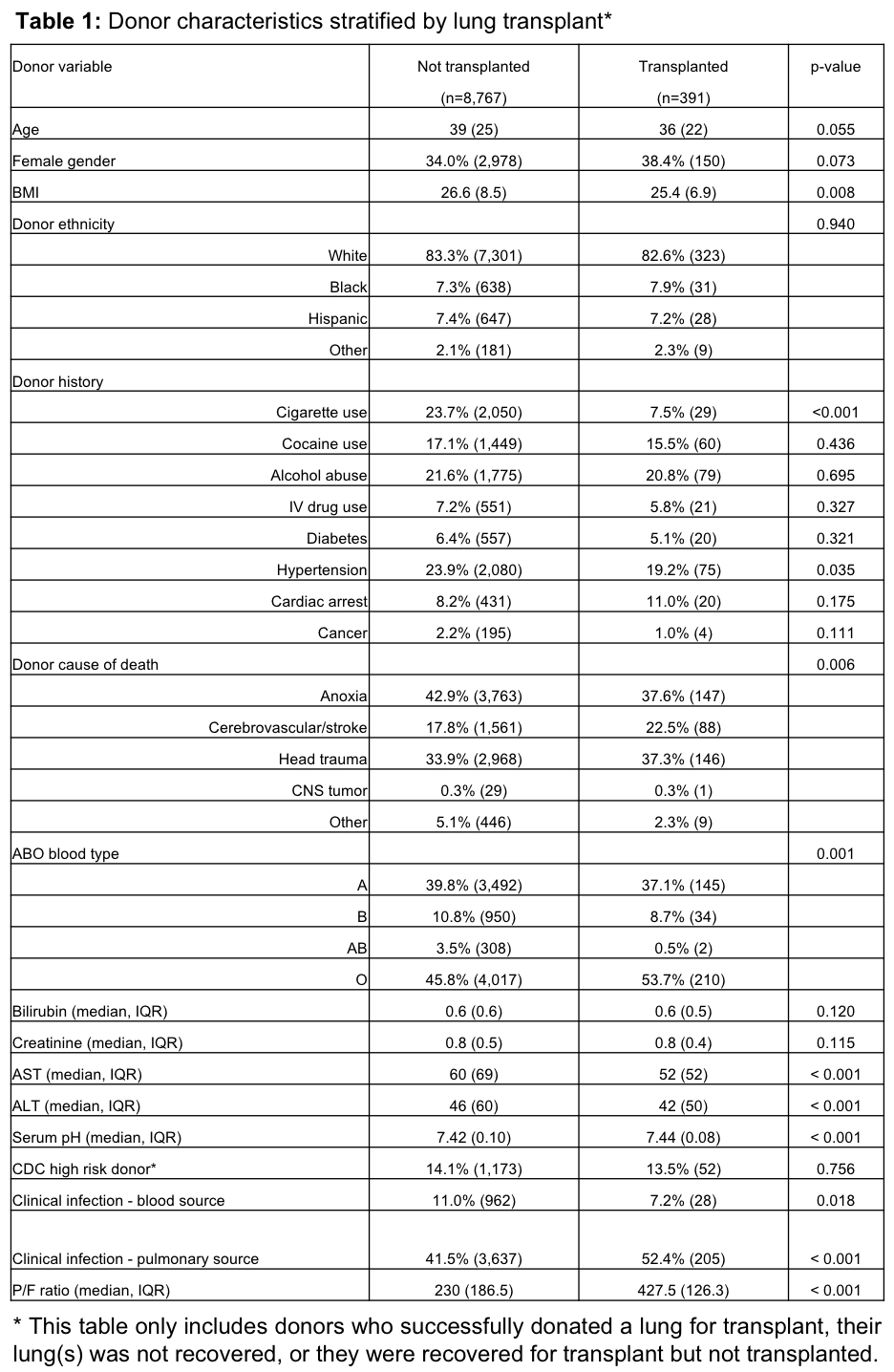Unfavorable Donor after Cardiac Death Characteristics in Lung Transplantation: An Analysis of the UNOS Registry
1Duke University School of Medicine, Durham, NC, 2Department of Surgery, Duke University Medical Center, Durham, NC
Meeting: 2019 American Transplant Congress
Abstract number: D223
Keywords: Donors, non-heart-beating, Graft function, Graft survival, Lung transplantation
Session Information
Session Name: Poster Session D: Non-Organ Specific: Public Policy & Allocation
Session Type: Poster Session
Date: Tuesday, June 4, 2019
Session Time: 6:00pm-7:00pm
 Presentation Time: 6:00pm-7:00pm
Presentation Time: 6:00pm-7:00pm
Location: Hall C & D
*Purpose: Despite growing evidence that donation after circulatory death (DCD) lung transplants have comparable survival outcomes and primary graft dysfunction rates to donation after brain death (DBD), DCD continues to be underutilized in the US. The purpose of this study was to examine DCD donor characteristics associated with non-utilization.
*Methods: In this retrospective study, all adult (age ≥ 18) DCD donors who donated at least one organ for transplant between 1993 and 2017 were analyzed from the UNOS registry. DBD donors and DCD donors who did not successfully donate any organ were excluded. Organ disposition per lung and reasons for non-use of donor lungs were identified. The primary outcome of interest was donor characteristics that correlated with lower transplant rates.
*Results: A total of 12,627 DCD donors met inclusion criteria. Of 25,254 lungs available for analysis, 2.8% were transplanted and 68% were discarded primarily due to poor organ function and ischemic time constraints. Notably, consent was not requested in 15.3% of DCD offers with non-heart beating donor being the leading reason for consent not requested (77.7%). DCD lungs were less likely to be transplanted if the donor had a higher BMI (mean 26.6 vs. 25.4, p=0.008), smoking history (23.7% vs. 7.5%, p<0.001), hypertension (23.9% vs. 19.2%, p=0.035), and a lower P/F ratio (median 230 vs. 428.5, p<0.001) (Table 1).
*Conclusions: The underutilization of DCD lungs in the US remains consistent with prior studies, in contrast with 30-40% utilization in several other countries. The most common reasons for non-transplantation of DCD lungs include modifiable pre-donor factors, such as lack of consent request, as well as donor factors, including hypoxemia. Interventions to increase consent and optimize DCD donor conditions, such as selective use of ex vivo lung perfusion, may increase utilization of DCD organs and expand the donor pool.
To cite this abstract in AMA style:
Choi AY, Jawitz OK, Raman V, Barac Y, Mulvihill MS, Moore C, Hartwig MG. Unfavorable Donor after Cardiac Death Characteristics in Lung Transplantation: An Analysis of the UNOS Registry [abstract]. Am J Transplant. 2019; 19 (suppl 3). https://atcmeetingabstracts.com/abstract/unfavorable-donor-after-cardiac-death-characteristics-in-lung-transplantation-an-analysis-of-the-unos-registry/. Accessed December 23, 2025.« Back to 2019 American Transplant Congress

